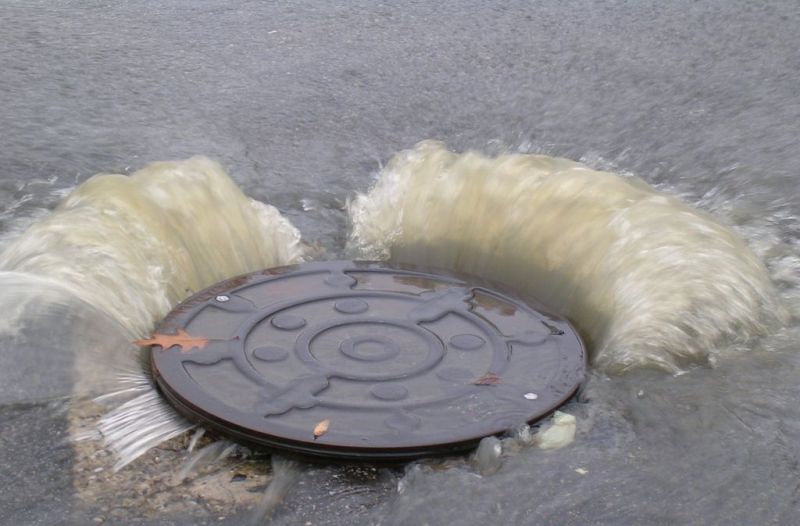While considering whether to pour your turkey grease down the drain this Thanksgiving or put it out for free curbside collection, consider this: dumping grease contributes to Raleigh sewage ending up in the streets.
City Sewer Spills 2009-11
Note: Each city’s spills are not during the exact same timeframe, but during similar two-year periods from 2009 to 2011.
Raleigh
Population: 356,321
Spills: 90
Quantity: 4.6 million
Greensboro
Population 236,864
Spills: 101
Quantity: 75,195 gallons
Charlotte
Population 630,478
Spills: 681
Quantity: 1.19 million gallons
Since June 2009, Raleigh’s sewers have overflowed 97 times and spilled more than six million gallons of sewage. While comparable-sized cities like Greensboro and Charlotte have had more overflows during a two-year period, the spillage volume is much greater in Raleigh.
During one single incident in Raleigh, nearly 900,000 gallons spilled. That’s 10 times as much as Greensboro lost altogether and almost as much as Charlotte lost during the entire two years.
The city has launched campaigns to discourage grease dumping, but some officials believe the public remains uninformed.
“The only thing that’s supposed to be put in the toilet is waste,” said Assistant Public Utility Director Donna Jackson. “That’s it, and toilet paper. People don’t understand that.”
With so much sewage overflow, officials clearly have cause for concern, but inappropriate materials aren’t the only cause of overflow—they aren’t even the leading one.
The city website claims a sewer overflow “is usually the result of inappropriate materials in the sanitary sewer system,” but heavy rain is actually the single biggest cause of overflows.
It accounted for more than 30 of the spills in the past two years. Other causes include: erosion from nearby rivers, blockage from construction debris, grease dumping, vandalism and accidents, and paper and rags being dumped into the toilet.
The sewer system’s age and size are also a problem. Raleigh’s has one of the biggest sewer systems, the first line of which was laid in 1890.
“Raleigh has probably 2,300 miles of sewer line,” said Barry Herzberg, an environmental engineer with the North Carolina Division of Water Quality. “They manage it well. That doesn’t mean there are not problems.”
One problem, he said, is that older stretches of sewer “have been installed without the benefits of today’s modern devices.”

Photo by City of Raleigh.
Jackson said any part of the system “that is deteriorating and failing, we’re replacing it as it happens. We don’t have any pipe that is at immediate failure but … we’d like to be ahead of replacing it.”
The city is working on a $70 million improvement project that will replace and enhance lines in the southeastern Crabtree Basin Service Area. The utility’s long-range capital improvement plan runs to $850 million.
One area slated for improvement has posed a consistent problem. A manhole near 3625 Anderson Drive has spewed more than 1.2 million gallons since June 2009.
Jackson said a previous upgrade at the site reduced the problem, but “this line gets a lot of inflow and infiltration when it does rain a lot … because it’s next to a creek.”
The manhole isn’t as high above the sewer flow as in most parts of the system, she added.
The Utilities Department has only had one fine for an overflow in the past two years. A worker at a treatment plant inadvertently opened a valve during testing, which lead to a 50,000 gallon spill along Highway 50 in Garner and $1,645 fine.
